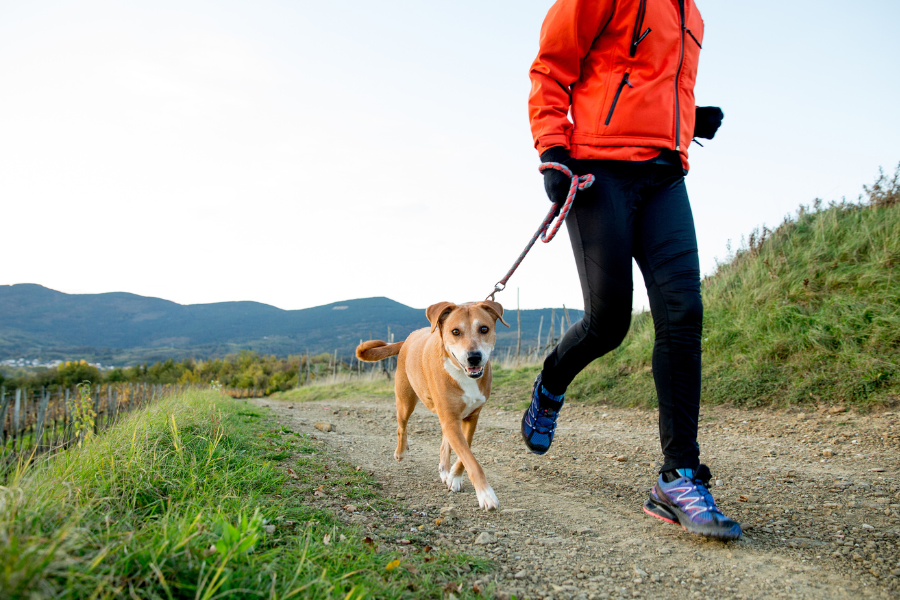Running with your four-legged friend can be a paw-some experience for both of you. However, it's not as simple as popping on the leash and hitting the pavement. Training your dog to be your running partner involves patience, technique, and a deep understanding of both your dog's physical capabilities and their psychology. Whether you're a seasoned runner or just starting out, the joy of exercising with your pet can be both enriching and fun. Here's your whistle-stop guide on lacing up with your canine compadre.
Is It Tail-Waggingly Good for Dogs to Run With You?
Yes, running with your dog can be incredibly beneficial—physically and mentally. Just as it keeps humans in great shape, regular running can help maintain your dog's weight, keep their cardiovascular system healthy, and strengthen their muscles. It's a two-for-one deal on fitness, but not all pups are born to be track stars. Long-distance breeds like Border Collies, German Shepherds, and Vizslas usually take to running like ducks to water, but more stout companions such as Bulldogs, Pugs, and Basset Hounds might prefer a leisurely stroll.
FAQ: Running from a Leash to Liberty with Your Pooch
Even if your pup is not a Greyhound, but he can learn to trot along by your side, even off the leash. Here's what you need to know:
When Can You Start Running with Your Dog?
Don't rush into a marathon with your pup. Like with any athlete, a training regime is essential. Their bones and joints are still developing, so stick to playtime and short walks. For most breeds, a safe age to start introducing running is around 6 to 18 months, but always consult your vet first.
How Do You Train Your Dog to Run with You Without a Leash?
Running leash-free is the holy grail for many dog owners, but it comes with major responsibility. Start in a safe, fenced-in area and practice your recall. If your dog is easily distracted, use a long-line training leash to gradually acclimate them to running alongside you. Consistency and patience will be your best friends.
The Leash Is Your Link to Safety and Control
Running with your dog on a leash gives you control in unpredictable environments. Pick a comfortable, non-restrictive running harness that doesn't chafe or impede their stride. Most importantly, never use a retractable leash; they're dangerous and do not provide good control or safe communication between you and your dog.
Gradual Increase in Doggy Mileage
Like a precise playlist that works its way up to your favorite running beats, you've got to increase your dog's running distance gradually. Start with a mix of walking and short running spurts for 10-15 minutes. Every couple of weeks, add another 5-10 minutes to gauge their comfort levels and stamina.
When Two Steps Are Really Three
For both of you to enjoy the run, your dog should maintain a gentle trot at your side. Invest time in consistent verbal markers for speed and distance changes. Slow ‘em down with a "steady" and pick up the pace with "go" commands. A consistent verbal cue can also be helpful, but remember, positive reinforcement is key.
The Importance of Rest and Recovery for Dog-Gone Tired Pooches
Just like you, your dog needs recovery days. Take at least one non-running, rest or play day between runs to help them recover and prevent overexertion, especially after a longer or faster run than usual.
Paw Protection and Seasonal Considerations
Your dog’s paws are their running shoes, and they can't swap them out for a fresh pair at the store. Check their paw pads for cuts or abrasions. In extreme heat, avoid running on hot asphalt or surfaces that could burn their paws; opt for early morning or late evening runs. In winter, dog booties can prevent snow and ice accumulation, and protect from salt or chemicals used to melt ice.
Aside from physical and route preparations, maintaining your dog's hydration and nutrition is paramount for their endurance and recovery. Just as athletes need proper fuel and hydration before, during, and after their activities, so do your canine companions. Invest in a portable water bottle or collapsible bowl specifically for your excursions to ensure they stay hydrated, and consider timing your runs after they've had a chance to digest their meal. Monitoring their diet and adjusting as needed based on their activity level will support their overall performance and recovery, keeping them ready and eager for the next adventure by your side.
Crafting Enchanting Routes and Tails of Triumph
Creating a route for your runs can be as exciting as planning a treasure map. Veer off the well-trodden path and explore the hidden corners of your kingdom, be it a serene park or the enchanted woods where tales of yore come to life. Every run can be an adventure, a chance to make new memories with your loyal companion at your side. And as the seasons change, so will the scenery of your adventures, from verdant spring paths to autumnal trails covered in a carpet of golden leaves. With each run, you're not just building endurance, but the bond between you and your dog!
Venturing into the realms of mutual fitness with your furry friend not only enhances physical wellness but also deepens the emotional connect between you and your dog. Through shared achievements and overcoming challenges, a unique trust and understanding is cultivated. This bond transcends the realms of a standard pet-owner relationship, elevating it to that of loyal companions on a quest for health, happiness, and adventure. Harnessing the spirit of teamwork and mutual respect, every run becomes a stepping stone towards an unbreakable bond, teaching us about patience, resilience, and the joy of living in the moment with our devoted sidekicks.
Final Thoughts and A Tail-Wagging Invite
Running with your dog can be one of the most rewarding activities you do together. It's a lot like dancing, where syncing your steps and energy levels brings an unparalleled harmony. Remember, every dog is unique, so tailor your training approach to suit your individual pet. Consistency, patience, and plenty of praise are your most powerful tools. In the end, whether you're galloping through fields or skimming city sidewalks, the miles logged are less important than the time spent side-by-side, one step at a time.
Saddle up, fur parents! Your adventure with your furry running mate awaits, so get out there, and here's to the many trails, paths, and parks you'll explore together.



